"Time is a sort of river of passing events, and strong is its current; no sooner is a thing brought to sight than it is swept by and another takes its place, and this too will be swept away." -Marcus Aurelius
Every one of us does our best to come up with an accurate picture of reality, and that includes the Universe, from the smallest subatomic particles to the largest scales fathomable. But given how bizarre and counterintuitive some of our physical laws are -- even at a fundamental level -- this can be a daunting task for even those of us who are professional theoretical physicists.
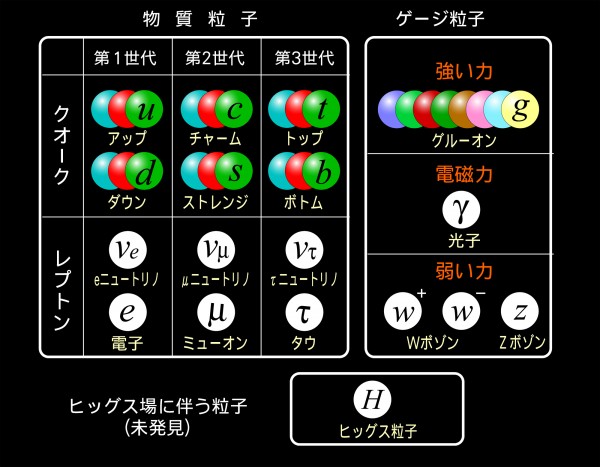 Image credit: LHC / ATLAS Collaboration / KEK (Japan), via http://atlas.kek.jp/.
Image credit: LHC / ATLAS Collaboration / KEK (Japan), via http://atlas.kek.jp/.
For today's Ask Ethan, our reader Brian wants us to go down to the deepest, most fundamental properties of matter, and asks:
This is more particle physics than astronomy, but hopefully you can help me. The strong force is mediated by gluons, and it attract quarks (and gluons) to each other. The electromagnetic force is mediated by photons, and attracts and repels electrically charged particles. Gravity is (presumably) mediated by gravitons, and attracts all particles with mass. The weak force is mediated by W and Z particles, and ...... is involved in particle decay? [Why] is the weak force always described like this? It's always about how it mediates particles decay into other particles. Does the weak force mediate the attraction and/or repelling of a class of particles? If so: which ones dammit. Or if not: why is it described as one of the fundamental forces, when it doesn't seem to actually mediate a force? Thank you for your time.
Let's back up just a second to put this question in context. There are four known fundamental forces in the Universe: gravitation, electromagnetism, the strong nuclear force, and the weak nuclear force.
 Image credit: © 2013 Maharishi Vedic University Ltd., via http://www.globalcountrycourses.com/.
Image credit: © 2013 Maharishi Vedic University Ltd., via http://www.globalcountrycourses.com/.
These are all forces, although we should clarify what that means. For particles as we can measure them, the application of a force causes that particle's momentum to change over time, what we commonly refer to as an acceleration in our day-to-day experience. For three of these forces, it's pretty straightforward.
In gravitation, the total amount of energy (which is mostly mass in our common experience, but includes all forms of energy) causes spacetime to distort, and every other particle in that Universe -- and hence in that distorted spacetime -- has its motion altered by the presence of everything with energy. This is, at least, how it works in our classical (non-quantum) theory of gravity. There may be a more fundamental theory out there, a quantum theory of gravity, in which hypothetical particles known as gravitons are exchanged, causing every particle in the Universe to experience what we perceive as the gravitational force.
 Image credit: Ned Wright (possibly Sean Carroll, too) via http://ned.ipac.caltech.edu/.
Image credit: Ned Wright (possibly Sean Carroll, too) via http://ned.ipac.caltech.edu/.
Keep this in mind as we move on to the others:
- Particles have a property, or something inherent to them, that enables them to feel (or not feel) a certain type of force.
- Other particles, force-carrying particles, interact with the ones that have the right properties to experience that force.
- As a result of these interactions, the particles change their momentum, or accelerate, in common parlance.
So let's look at the others.
 Image credit: © Michael Richmond of http://spiff.rit.edu/.
Image credit: © Michael Richmond of http://spiff.rit.edu/.
In electromagnetism, the fundamental property is electric charge. Unlike gravity, that charge can be either positive or negative. The photon, which is the force-carrying particle related to charge, causes like charges to repel and opposite charges to attract.
What's also worth mentioning is that moving charges, or electric currents, experience a different manifestation of the electromagnetic force: magnetism. This happens for gravity, too, and is known as gravitomagnetism. There's no need to go in-depth on this point, but I do want you to keep in mind that there's not only a charge and a force carrier, but that there are currents as well.
There's the strong nuclear force, which has three fundamental types of charge, and which you can read about in-depth here. While all particles contain energy (and thus are influenced by gravity), and while the quarks, half of the leptons and a couple of the bosons contain electric charges (and couple to electromagnetism), only the quarks and gluons contain color charge, and can experience the strong nuclear force.
Since there are huge collections of masses, gravity is easy to observe. And since the strong nuclear force and electromagnetism are so incredibly powerful, they're easy to observe as well.
But what about that last force? What about the weak force, the one that Brian asked about?
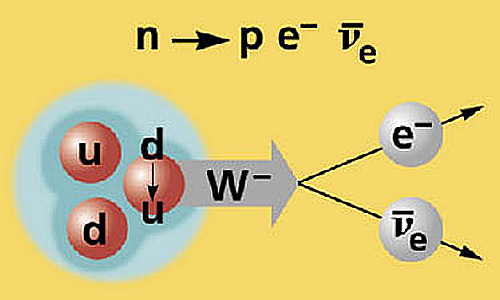 Image credit: Harry Cheung of Fermilab, via http://home.fnal.gov/~cheung/.
Image credit: Harry Cheung of Fermilab, via http://home.fnal.gov/~cheung/.
We normally talk about the weak interaction in the context above: some type of radioactive decay. It's either a heavy quark-or-lepton decaying into lighter, more stable quarks-and-leptons. The weak force certainly does this, among other things. But that doesn't sound like our other forces, does it?
But it turns out the weak force is really a force, you just don't hear about it working the conventional way very often... because it's so weak! In particular, since it normally involves charged particles, it's typically dwarfed by the electromagnetic force, which is some 10,000,000 times stronger at even the distance of a single proton.
 Image credit: Contemporary Physics Education Project, via http://cpepweb.org/.
Image credit: Contemporary Physics Education Project, via http://cpepweb.org/.
You see, a charged particle always has an electric charge whether it's moving or not, but the electric current that it makes is dependent on its motion relative to other particles. It's the current that defines magnetism, which is just as important as the "electric" part of electromagnetism. Composite particles like protons and neutrons have intrinsic magnetic moments, as does the (fundamental) electron.
Well, quarks and leptons each come in six different flavors: up, down, strange, charm, top and bottom for the quarks, and electron / electron-neutrino, muon / mu-neutrino, and tau / tau-neutrino for the leptons. And each one of those quarks-and-leptons has an electric charge associated with it, but it also has a flavor property associated with it. If we unify the electromagnetic and the weak forces (to create a more fundamental electroweak force; see here), then every one of these particles gets something you can think of as a weak charge (or an electroweak current), and a weak coupling constant to go with it. This is something predicted in gory detail by the Standard Model, but that's been incredibly difficult to test, primarily due to the fact that the electromagnetic force is so much stronger!
But a new experiment has just released their first results (published in PRL; full paper available here), and was actually -- for the first time -- able to measure the impact of the weak force, which is just a couple of hundred parts per billion of the impact that the electromagnetic force has!
And that allowed them to determine the (dimensionless) weak couplings of the up and down quarks,
and therefore the weak charges of the proton and neutron. Before I get on to the results, let me tell you what the best Standard Model predictions are for the weak charges:
- QW(p) = 0.0710 ± 0.0007,
- QW(n) = -0.9890 ± 0.0007.
Well, based on the data they obtained for this high-energy scattering, they were able to experimentally determine that:
- QW(p) = 0.063 ± 0.012,
- QW(n) = -0.975 ± 0.010.
Which, within the measurement errors, agrees tremendously! Now, they state at the end of their paper that they will eventually have 25 times more data, which means the errors should go down -- when all is said and done -- by a factor of 5, or the square-root of the amount of data. And if there are any surprises, or disagreements with the Standard Model, this would be tremendous. Looking at the preliminary data, though, it sure doesn't look likely!
So there is a weak charge associated with particles, we just don't talk about it because it's been so mind-numbingly hard to measure. But at long last, we've done it, and to the best of our capabilities, the Standard Model is right on!

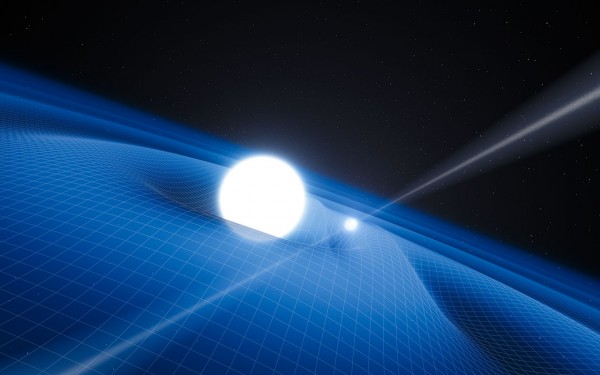
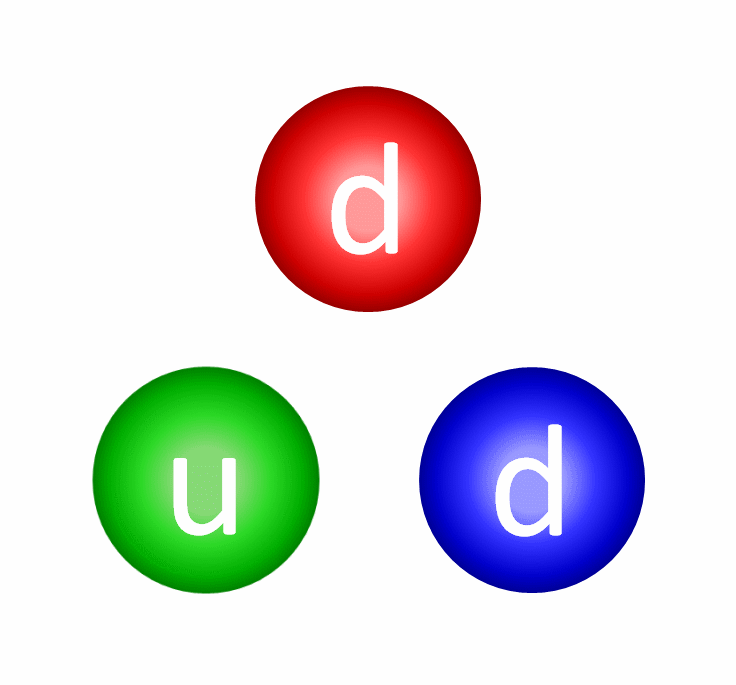

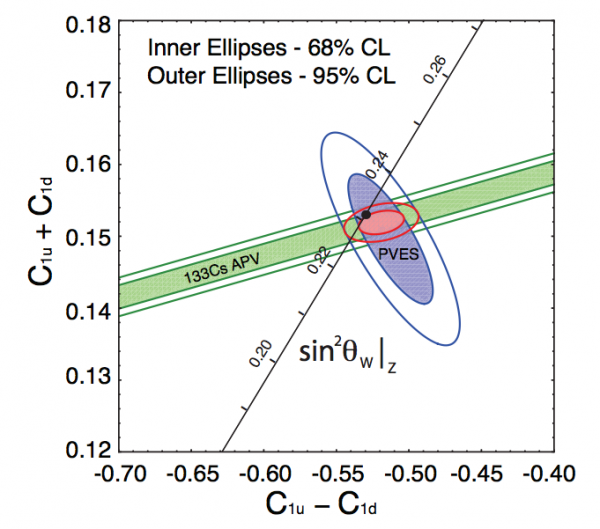
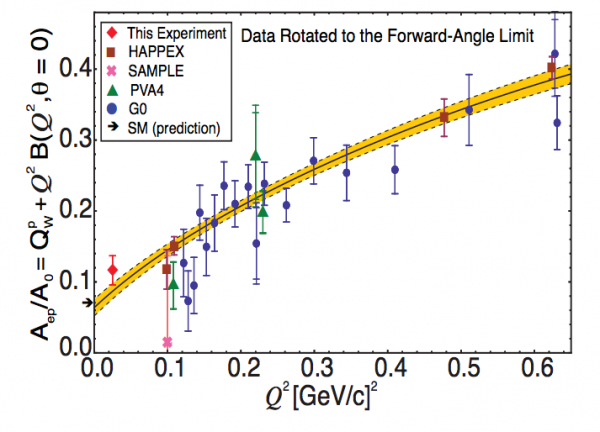
Can you describe what "gives out" in the weak force that allows neutrons to decay within 10 minutes (per graphic #8) and why is that prevented within the confinement of an atom's nucleus? Does it involve the perpetual proton-neutron "identity switching " that occurs in the nucleus?
@MandoZink: Within a nucleus, the nucleons (protons and neutrons) behave "collectively" (sort of like the sea of electrons in a metal). For purposes of your question, the specific issue is the nuclear binding energy -- the difference between the measured mass of the nucleus, vs. the sum of the bare (free-space) masses of the indivdual protons and nucleons.
When a nucleus undergoes beta decay, it's not the same as a bare neutron turning into a bare proton. Rather, it is a nucleus (Z,A) turning into (Z+1,A) (where Z = #protons and A = #protons + #neutrons). If the binding energy of the target nucleus is larger than that of the source (or equivalently, the mass of the target is _lower_ than the mass of the target), then that decay is energetically allowed. Otherwise, it is forbidden.
What is even more interesting is that there are nuclear pairs for which _proton_ decay is favored: that is, (Z,A) -> (Z-1,A) e+ nu_e (or more often, the nucleus absorbs an orbital electron, called "electron capture"). Proton decay via the weak interaction is forbidden, of course, since the neutron is more massive than the proton. But for a nucleus, if m(Z,A) > m(Z-1,A), then the decay can proceed apace.
@Michael Kelsey
I really appreciate the response. Unfortunately, considering my rudimentary understanding of what I was even asking, your answer now demands I begin another whirlwind online education effort to grasp what I currently do not comprehend in nuclear physics. I learned what I know of particle physics by watching multiple lecture videos (mainly Sean Carroll), struggling to comprehend Matt Strassler's columns, and enduring many hours of chasing instructional links while constantly going back to a site called Hyperphysics to see if I now understand the info there. I do try.
Do you happen to know of a good link that might illustrate your explanation accompanied by inspirational graphics? I barely had enough knowledge to know neutron decay was
prevented when it was part of a nucleus, and that quarks keep juggling identities. My lack of descriptive eloquence here is an indication of my current deficiencies in this area of physics.
Once again, I appreciate your response and will visit any links you think might illuminate the answer you gave. Even if it takes many months, I eventually do learn what I seek.
@Michael Kelsey
I really appreciate the response. Unfortunately, considering my rudimentary understanding of what I was even asking, your answer now demands I begin another whirlwind online education effort to grasp what I currently do not comprehend in nuclear physics. I learned what I know of particle physics by watching multiple lecture videos (mainly Sean Carroll), struggling to comprehend Matt Strassler's columns, and enduring many hours of chasing instructional links while constantly going back to a site called Hyperphysics to see if I now understand the info there. I do try.
Do you happen to know of a good link that might illustrate your explanation accompanied by inspirational graphics? I barely had enough knowledge to know neutron decay was
prevented when it was part of a nucleus, and that quarks keep juggling identities. My lack of descriptive eloquence here is an indication of my current deficiencies in this area of physics.
Once again, I appreciate your response and will visit any links you think might illuminate the answer you gave. Even if it takes many months, I eventually do learn what I seek.
@MandoZink #3 and #4 (pity duplicates can't be filtered away :-/). I don't think you really need much particle physics for this. A rough physical analogy is sufficient: imagine the protons and neutrons as balls made out of Play-Doh.
Construct a nucleus by taking a bunch of those balls and squishing them together. Instead of marbles in a bag, you have one big ball where you can still mostly identify the original pieces (being different colors), but their edges are stuck together and blurry so you can't really pull them apart.
So now, beta decay (mediated by the weak force) is really taking that whole big ball from one state to another. What the decay looks like (Z -> Z+1 vs. Z -> Z-1) depends on the energetics of the two big balls, before and after, not on the properties of the individual little nucleons.
In this situation, the quark-level interactions aren't really useful in making predictions or doing calculations.
A shorter version that helps couch, rather than illustrate, the reason is that when bound, things want to stay bound. If splitting up is a good thing to do (as in it makes the energy of the two things together lower than the energy of the two things as one), then they will want to split apart, but before they do that, they have to overcome the binding that holds them together.
So there's a brick wall between the two states: a forbidden energy. And Quantum Mechanics says that things can go through forbidden zones if you only wait long enough. See
http://en.wikipedia.org/wiki/Quantum_tunnelling
10 minutes, when you take the energy released and the binding forces of the neutron into account (and, really, the same equation is used for any tunnelling scenario: including Uranium decay, et al - the energies are all you need to know) is roughly how long you have to wait before you have a 1/e (37%) chance of having the occur by then.
First, Ethan really nice explanation; and I always appreciate when you focus on some new and amazing research.
So I am amazed.
Now just one pesky question about this research.
The researchers determined the following weak charge values:
QW(p) = 0.063 ± 0.012,
QW(n) = -0.975 ± 0.010.
Very nice, excellent, amazing.
Now my very naive question is; what units are these charges given in? Is this the same units as the charge of an electron, where an electron charge is 1.60217657 × 10^-19 coulombs? No, I don't think so. Is this in some kind of natural units.
So QW(n) = -0.975 ± 0.010 is -.975 of what? 1/10,000,000 of an electric charge?? What? Of some kind of natural units?
Perhaps my question is wrong headed; so please just help my thinking. Thanks.
@ OKThen
..."And that allowed them to determine the (dimensionless) weak couplings of the up and down quarks,"
Sinisa Lazarek
Thanks but that doesn't seem to answers my question.
And I am really asking and speaking from ignorance. So I defer to all explanations.
But this link
http://hyperphysics.phy-astr.gsu.edu/hbase/forces/couple.html
gives the coupling constants of the 4 forces as dimensionless numbers.
And the coupling constant for the
--strong force is 1
--EM is 1/137
--weak is 10^-6
--gravity is 10^-39
So coupling constants isn't the same as charge. I have no idea of the relationship for the weak force. I mean.
Gravity is inverse square law
strong force is mostly a constant force (except for asymptopic freedom)
EM is inverse square.
So I am trying understand the kind of function the weak force has relative to this weak force charge.
And yes I am defibnitely confused. Just to be clear about my not really understanding.
So we have this really excellent research. I'm serious and it comes up with 2 weak charges of a proton and a neutron for the weak force. And I'm wondering what kind of force equation I might have (yes, I am thinking classically).
So my questions has become either.
What is the units of the weak force charge (probably the wrong question)
or What is the relationship. F= some constant Qa x Qb function (of r). what is the function. e.g. r^-1 or r^-121 or what? (maybe a better question, maybe not).
I'm trying?? Help. Yes, I defer to you and you and you because I am not understanding something. Thanks.
Hi, Ethan! Thanks for taking the time to respond to my question with your usual thoroughness. I have to confess that I only just barely follow the whole force vs. current distinction, and the reason that it applies here. (I had trouble with this stuff in college physics, too.)
Just to clarify: it sounds like ALL of the quarks and leptons interact via the weak force. But not any of the bosons, right? That is a bit striking, since the other three forces all affect some of the bosons.
Brian,
That's true. The quarks and leptons -- all of the fermions -- have a weak charge, or a flavor. You can see this illustrated by the fact that they come in three generations; you can hypothesize a fourth generation and we know, if one exists, it too would have its own unique weak charge.
I'm not sure I know what the weak charge of the W-and-Z bosons are. I see the possibilities, since we know a photon is neutral (uncharged) under the electromagnetic force, but it still mediates between charged particles, but the gluons do carry a color-charge as they mediate the strong interactions.
Someone who knows better might have to chime in, because the W's might; I don't know for sure. The W's and Z's have weak isospin, but we know the Z's are definitely flavor-neutral (e.g., a quark-antiquark or lepton-antilepton can only make a Z if they've got the exact opposite flavor, like up-antiup, electron-positron, etc.). But there is a WWZ vertex and W's mediate changes in flavor between fermions, so that means either the W's carry a weak charge or, if they don't, there's a trivial pattern in weak charges among fermions.
@Brian #10, Ethan #11: the breakdown of the forces is like this: quarks feel everything (strong, weak, and EM); leptons feel weak, electrons feel EM; photons feel only EM with charged particles; the weak bosons and gluons (strong force) self-interact. The latter is what Ethan meant by "there is a WWZ vertex", and there's similarly a ggg vertex (and even a four-gluon vertex!).
The weak charge (technically, weak hypercharge), is a dimensionless linear combination of charge and weak isospin; specifically, Y_W = (Q - T3)/2. Each generational pair of quarks, or pair of leptons, form a weak isodoublet (T=1/2, so T3 = +1/2 or -1/2), so you can work out the Y_W's.
The weak vector bosons form a weak isotriplet (T=1), with W+ having T3 = +1, W- having T3 = -1, and the (unmixed) "W0" having T3 = 0. With electroweak unification, the W0 and B mix to form the Z0 and the photon. Since the photon also has T3 = 0 (it's a weak singlet, with T=0), I believe that the Z0 necessarily also has T3 = 0.
The end result of all this is that the weak bosons all have zero weak hypercharge (since Q = T3 in all three cases).
@ OKThen
I thought that the word "dimensionless" would answer it. There are no units.
from one site: "For the weak interaction, the quantity is called "weak isospin", and it does have quantized possible values. For the QCD (color) interaction, there are fixed units of color charge. However, these cannot be represented as real numbers. You can think of them more like vectors of fixed length on a set of special directions in a plane. "
Sinisa Lazarek
Thanks, that helps some. i.e. to realize how confused my understanding is. ditto, MK#12. So I've got some key ideas to track down and try to understand better.
Hmm let me search predicted weak hypercharge?/
" in 2004, physicists at the Stanford Linear Accelerator Center in California measured the weak charge of the electron and found it to be consistent with the Standard Model prediction of slightly greater than zero." http://physicsworld.com/cws/article/news/2013/sep/16/experiment-probes-…
But here http://math.ucr.edu/~huerta/guts/node10.html says that
hypercharge of
- lefthanded leptons is -1
- right handed electron is -2
- right handed neutrino is 0
based on a theory formula not observed.
Hmm this 2nd reference is what I was looking for. But why does the hypercharge of an electron in this reference disagree with the hypercharge of an electron as measured in 2004 above reference?? Because 0 is not -1 or -2
Wikipedia give the neutrino hypercharge = -1; which at least agrees with left handed lepton hypercharge.
So let me track down the 2004 reference??
"Theorists had predicted that the weak force... is stronger for electrons with one spin orientation than for those with the other, a phenomenon known as parity violation... In the new study, that disparity manifested itself as a single extra electron emerging from a pulse of electrons with counterclockwise spin compared to a pulse of electrons with clockwise spin. That tiny difference revealed the strength of the electron's weak charge, Kumar notes." http://www.phschool.com/science/science_news/articles/electrons_other_c… OK, so it seems to me that the statement of hypoercharge = 0 is incorrect and the reference that
- left handed electrons hypercharge = -1 and
- right handed electrons hypercharge = -2 must be correct.
Nice. makes sense. And I assume that these charges are dimensionless in the sense that charge of eleectron = 1 is dimensionless. i.e. just have the appropriate conversion factor constant.
So what remains is my question of what does the equationb of force for the weak charge look like? Hmm.
"Unfortunately, there is simply no such force/potential formula for weak interactions. The main objective of this article is to study the duality of the weak interaction and to derive such weak potential and force formula."
Great! However, aside from this sentence the whole paper is unreadable.
Finally, I defer to anyone who understands this;likely I am seriously misinterpreting what I am reading.
@OKThen,
my knowledge of the finesses of QM are very weak (pun intented :D ). As much as I feel comfortable with relitivity (in theoretical sense), things such as colors, flavors etc in QM are still beyond me. Never did get a chance to dig into it. So many particles.. so many properties... sigh..
OK, I'll ask the $64,000 dollar question.
Ethan: you have a free neutron with a mass of 939MeV. It suffers Beta decays in say 15 minutes, and you're left with a proton, an electron, and an antineutrino. Beta decay is said be result of the weak interaction, mediated by the the W-boson. Which has a mass of 80GeV. How can an 80GeV particle possibly be involved in free neutron decay?
Just a comment/question about the electromagnetic force(s):
One of the highlights of my undergraduate physics courses (which I enjoyed almost 50 years ago!) was the insight that the classical magnetic force is, strictly speaking, fictitious (or
"emergent") and just a manifestation of the classical Lorentz electric force applied to moving charges, as analyzed with the aid of special relativity. No fancy Maxwell EM unification is needed (least of all, QM!), only SR calculations and the Lorentz force. At least, that is the way I recall it; I hope this memory which I have held all these years is not totally off the mark!
@John Duffield #15,
> How can an 80GeV particle possibly be involved in free neutron decay?
Briefly. Just like momentum and position, energy and time form a Heisenberg uncertainty pair so a W-boson can mediate the decay as long as it doesn't exist long enough to turn it's mass observable.
At least that's the explanation I've given myself...
So if there are gravitons then does that mean that space doesn't bend after all but just appears to?
@John Duffield #16: The W-boson only has a mass of 83 GeV wheni is observed as a free particle (e.g., when it is produced in a collision at the SLC, LEP, SPPS, or LHC).
In beta decay, the W behaves exactly the same way as a "single photon" does in the lowest order calculation of electron scattering: it is a _propagator_ between the initial and final state vertices, and is never observed (i.e., it is "virtual").
You probably want to look up a first-year relativistic quantum mechanics textbook (or maybe the Wikipedia article on "propagator") to get all of the gory math. In simple terms, you integrate over the four-momentum of the virtual particle; there is a pole in the complex plane at the natural ("free") W mass, and your integral path goes around that pole.
If you consider just the initial vs. final four-momentum of the decay, you can calculate the "effective mass" of the virtual W. You'll discover that it is far away from the "free particle" mass (83 GeV). This is called being "off the mass shell", and generally speaking, the farther off-shell a reaction is, the longer its lifetime.
CatMat: that doesn't sound right. I've read Matt Strassler's article on virtual particles, and it says this: "The best way to approach this concept, I believe, is to forget you ever saw the word 'particle' in the term. A virtual particle is not a particle at all. It refers precisely to a disturbance in a field that is not a particle". Virtual particles aren't short-lived real particles that pop into existence like magic. They're field quanta, or "chunks of field". My take on it is that it's like you divide a field up into squares and say each one is a virtual particle. Virtual photons are employed in QED, but hydrogen atoms don't twinkle and magnets don't shine.
Michael, thanks for trying, but whilst there's a single photon in say Compton scattering, there are no real photons twinkling in and out of existence in say the hydrogen atom. I've looked at the propagator article, and it's impenetrable maths along with things like "this translates to the virtual particle traveling faster than light". And initial v final four-momentum doesn't feel good, because four-momentum is surely conserved?
If anybody else understands this and can explain it in simple terms I'd be only to pleased to hear it. I'd like to be able to explain it to my grandmother.
"So if there are gravitons then does that mean that space doesn’t bend after all but just appears to?"
No more than that because photons exist, light doesn't act like a wave.
Admittedly, not really helpful, but there's not a lot that can be done until we have some good indications of what a quantum gravity theory looks like before we can answer with a better one than given to the question "Can we predict where the planets will be in the future?" which was, in essence "Maybe".
Why wouldn't real photons twinkle out of existence in say the hydrogen atom?
"In quantum field theory we talk about forces carried by virtual particles. Therefore, the Coulomb interaction between the proton and electron in this hydrogen atom is a result of the exchange of virtual photons."
"This means that we adopt an interpretation that the distribution of any state of a hydrogen atom determined by the Schrodinger equation gives a distribution of virtual photons in the hydrogen atom."
Hmm, yes not only virtual photons twinkling in and out of existence (or not) in hydrogen atoms; but even virtual electrons, virtual neutrinos and even virtual W-bosons.
But what do I know? I really don't know what I'm talking about. But I do agree with Tina Turner.
"What's mass got to do with it?
What's mass but an irrelevant commotion."
No I don't understand the math of propagation, virtual particles and QFT.
So I defer to Michael Kelsey.
@Michael Kelsey
Sorry it took me a few days, but I want to thank you for responding. Since my understanding of the bosons is still simplistic, I was hoping an answer to my question would also be as simplistic. Your "dough" analogy helped, and it made me realize that with a better comprehension of the mechanics I would be asking much different questions. I fear I am forever stuck with constantly seeking a better conception of the realities of matter.
Last year I was blown away by Matt Strassler's revelation that most of the mass of a proton and neutron consisted of countless quark-antiquark pairs. That helped me realize the complexity involved in my quests. Yesterday I found Matt's "Protons and Neutrons: The Massive Pandemonium in Matter" column, which I am still reading. The insightful description of the proton-neutron constituents in that column appears to be a great adjunct to what I would like to have known when I asked my question here.
I always appreciate discovering a good analogy explaining a phenomena, especially when accompanied by a corresponding graph or graphic. I have watched at least 25 or more attempts to explain the Higgs boson. One thing I admire about Ethan's blogs is his seemingly massive access to relevant graphics. I cannot understate the value of a well-organized body of links and references.
@Mando: Since Michael hasn’t replied, maybe I can offer something. Matt’s a nice bloke, and some of his explanations are really good. See for example Virtual particles, what are they? Note this bit: A virtual particle is not a particle at all. It refers precisely to a disturbance in a field that is not a particle. Now take a look at the gluon article on wikipedia and note this: ”as opposed to virtual ones found in ordinary hadrons”. A proton doesn't contain countless gluons they way people think. They’re virtual particles, which means they aren’t really particles. Ditto for the countless quarks and antiquarks. IMHO a better description would say something like this: A proton consists of three valence quarks along with gluon field, and those quarks are in themselves field. They aren’t little billiard-ball things. They’re more like “field nodes”, for want of a better phrase. The proton does not actually contain countless quarks, antiquarks, and gluons ready to spill out like beans from a bag.
@John Duffield #25 and MandoZink #24: Yeah, it took me a bit to notice that there was another post here (and the "e-mail me" doesn't seem to work right); sorry.
John's description is excellent. Virtual "particles" aren't really. We particle physicists often ascribe some reality to them, mostly from visualizing processes in terms of Feynman diagrams.
But since the virtual "particles" (especially those which appear as loops, rather than propagating between real particles) don't have a definite four-momentum, treating them as fixed entities just doesn't work.
Another way of stating Matt's description is that most of the mass of a nucleon consists of the energy of the "color" (QCD) field holding the three "valence quarks" in a bound state. Using high energy collisions, we can sample that field and partition it into contributions from quarks, antiquarks, and gluons, but that doesn't mean there are "real particles" zipping around in there :-)
What upsets me about the weak interaction (and, by the way, the Higgs field) is the fact that the so called "vector boson" in fact does carry out the "leftovers" of the interaction, not causes it.
For instance: a neutron, alone, decays into a proton, emiting a W- boson. But how does the down quark "knows" it has to emit a W-? And why this particular down quark, since the neutron has two of them?
@João Carlos #27: I'm not sure what you mean by "not causes it." If you're looking for a primum mobile, you're not going to find it in physics. We describe _how_ things happen, and not so much of "why".
When a weak transition occurs, there are limitations, such as conservation of energy and conservation of electric charge. If a neutron were to emit a W+, then it would have to turn into a negatively charged baryon. That would be an antiproton, and such a transition would involve lots and lots of flips to quantum numbers (and therefore cannot happen). So emitting a W- is the only thing that _can_ happen, and the neutron or down quark doesn't need to "know" this; it's built into the system.
Rather like apples don't need to know about quantum gravity and spacetime curvature to fall down on some dafty bugger's head... :-)
Did anyone try to detect the photons between electrically charged particles?
I wonder how differ photons between say two positively charged particles, and between positive and negative particle?
How do they differ? Wavelength? Polarization?